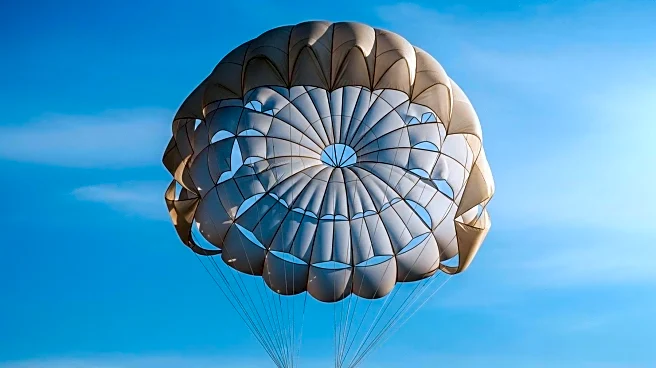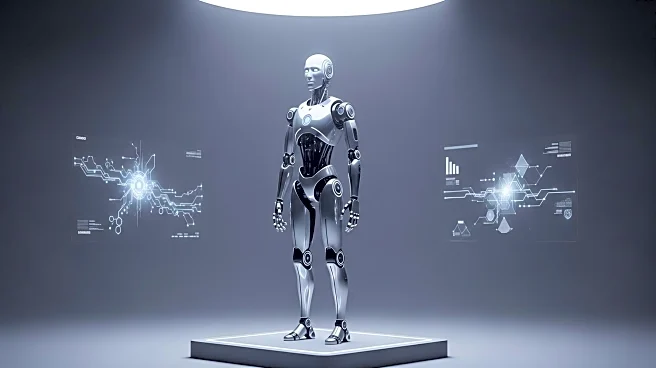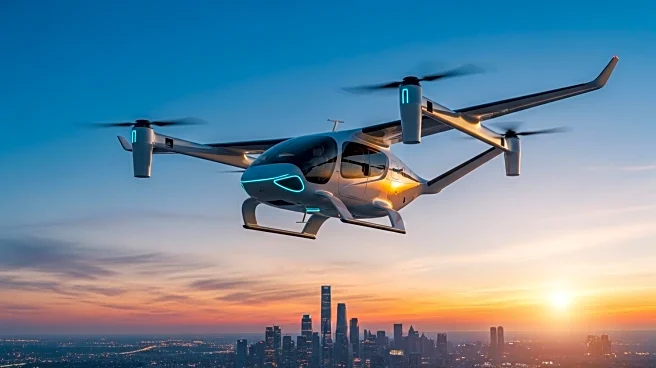What's Happening?
A team of engineers from Polytechnique Montréal has developed a new parachute design using kirigami, an ancient Japanese paper-cutting art. This innovative approach involves cutting intricate patterns into materials, allowing them to twist and stretch consistently. The kirigami-inspired parachutes are designed to stabilize quickly and maintain a hard-ballistic descent profile, reducing drift and improving accuracy in air deliveries. The research, led by Professors David Mélançon and Frédérick Gosselin, demonstrated that these parachutes can be produced efficiently using laser-cutting techniques, making them cost-effective and reliable for various applications, including humanitarian aid drops and drone logistics.
Why It's Important?
The development of kirigami-based parachutes represents a significant advancement in air delivery technology. By enhancing accuracy and reducing drift, these parachutes can improve the efficiency of delivering supplies to remote or disaster-stricken areas, potentially saving lives and resources. The simplicity and scalability of the design make it suitable for a wide range of applications, including space exploration, where precise landing of instruments is crucial. This innovation could transform logistics and aid delivery, offering a more reliable and affordable solution for global challenges.
What's Next?
The research team is exploring further modifications to the kirigami patterns to enable parachutes to spin, glide, or adjust descent rates based on payload weight. These advancements could expand the applications of the technology, making it suitable for more complex missions, such as planetary exploration. The open-source FIRM software design tool on GitHub allows other engineers to experiment with different geometries, potentially leading to new breakthroughs in aerodynamics and stability. As the technology evolves, it may become a standard in air delivery systems, offering enhanced precision and reliability.
Beyond the Headlines
The integration of kirigami into parachute design highlights the potential of combining art and engineering to solve practical problems. This approach not only simplifies manufacturing but also opens up new possibilities for creative solutions in various fields. The kirigami parachutes could lead to more sustainable and efficient methods of transportation, reducing environmental impact and resource waste. As industries adopt this technology, it may inspire further innovations that blend artistic concepts with scientific principles.










